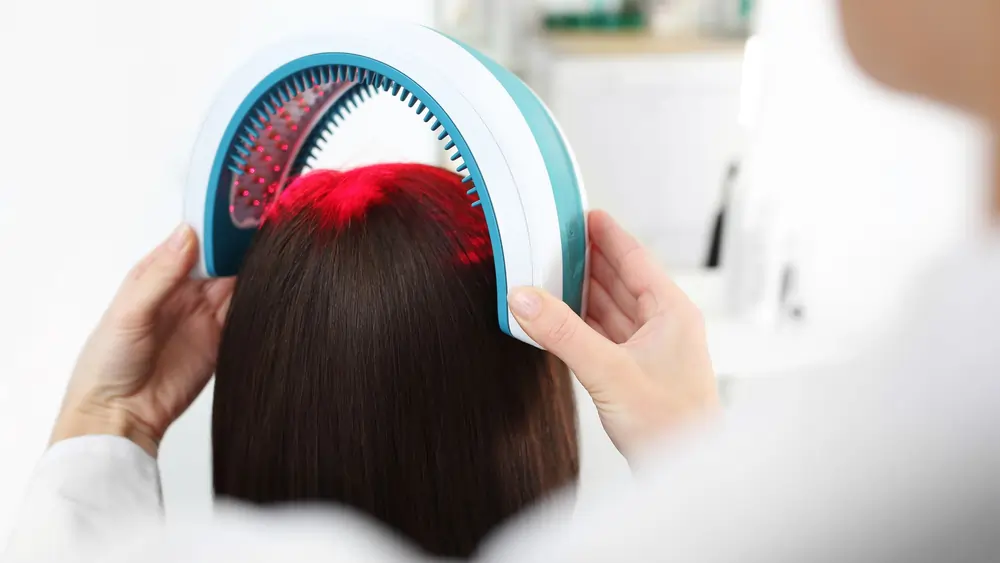The success rate of a hair transplantation depends highly on the skill level and experience of the person performing the procedure as well as the thickness of the person’s donor hair. However, even when the surgery and procedure is a success, some hair transplant side effects may still be experienced.
Short-Term Side Effects of a Hair Transplant
There are a few different types of hair transplant side effects you could experience and it’s important to know what they are. Let’s go over the short-term side effects of a hair transplant.
- Poor results: It may so happen that after the procedure is done, you are not satisfied with the hair transplantation results and the outcome is not what you expected. It could be that the hair density is too low or the hair is growing in an unnatural direction, or that the implanted hair direction was not matched to the natural hair growth. This does not give a good look. However, with a trained and experienced specialist doing the procedure you do not need to be afraid of the hair transplant side effects at all.
- Pain during and after the treatment: The use of needles and injections may put many people off, especially those afraid of needles. Obviously with injections comes pain. However, a local anaesthetic is generally used in a hair transplant and the patient will barely feel any pain during the procedure.
- Inflammation and swelling: This is one of the most common hair transplant side effects that are bound to occur. After a surgical procedure there will always be some swelling and inflammation for a short period of time. If a patient uses some antiseptic and soothing cream, the swelling could go down in about 2 to 3 days. Another way to reduce swelling is by sleeping with your head elevated.
- Itching: When any wound is healing it tends to get itchy. The same occurs with a hair transplant. The trick is to not scratch it, as this can cause infection and complications, rather rub some soothing cream over it.
- Bleeding: Bleeding is probably one of the most common hair transplant side effects. Bleeding is easily treatable, but in some severe cases if it continues for an extended period of time may need additional stitching.
- Scarring: There is always a risk of scarring after a surgery and with a hair transplant it could be on the donor area and the area the transplant was performed on. As the hair grows back, it generally will cover any visible scars on the scalp. This is a very easily treatable hair transplant side effect.
- Numbness: One of the hair transplant side effects that are unavoidable in numbness. On average after a procedure, the numbness will last for about 18 weeks. If the patient experiences numbness after the 18-week period then they should seek medical advice.

Long-Term Side Effects of a Hair Transplant
While the list of short-term hair transplant side effects is quite long, most of these are treatable and are often resolved within the first few weeks post hair transplant. There are, however, some long-term side effects and complications involved with a hair transplant that we need to be aware of and consider beforehand.
- The grafts fall out: When all of the transplant hair falls out at once, it is known as “shock loss”. This is completely normal and this type of hair loss is not permanent. New hair will grow back in place of it. This can be prevented by doing a thorough pre-exam of the person’s head, to determine how well the grafts will take and the quality of the scalp.
- Scalp Laxity: The scalp experiences a lot of trauma when the hair transplant takes place and the laxity of the scalp could be affected. Generally, the scalp will regain most of its laxity within the first 6 months after the surgery, but it will continue to loosen. If the scalp was loose to begin with, it will return to full laxity easier than if the scalp was tighter before surgery.
- Hair curl: Another long-term hair transplant side effect is “hair curl”. This happens when the hair follicle that the hair has been transplanted into curls under and has resulted in an ingrown hair. This can result in infection and be very irritating for the person. If there are many “curled hairs” on the head, it could cause the transplant to appear unnatural.
As you can see, there are many hair transplant side effects to consider. If you are a person who is prone to hair loss and hair thinning and you would like to consider getting a hair transplant, it is best to do all your necessary research beforehand. Make sure you get in contact with a fully trained and experienced surgeon that will be able to do the transplant for you.
Ensure that all the pre-examinations are done on your scalp and that you are fully aware of any of the hair transplant short-term and long-term side effects that you could possibly experience.

Our Final Thoughts on Hair Transplant Side Effects
It is very common that hair loss in men and hair loss in women is experienced in one way or another. While one of the causes of hair loss is ageing, it can also be caused by medical or skin conditions, and even trauma to the scalp. Hair loss can be harmful to our self-esteem and make us feel very unhappy about our appearance.
Wearing a wig or a hat can be a temporary fix for the time being, but many people who experience hair loss are choosing to have a hair transplant for a more permanent option. A hair transplant is considered cosmetic surgery and the aim of it is to restore hair growth to the areas of the scalp that has absent or limited hair growth.
Hair transplants are effective for many people, but as with any cosmetic surgery and surgery in general, they certainly do come with their pros and cons and list of possible side effects. Regardless of these hair transplant side effects, we feel there is a lot more to gain than lose.




